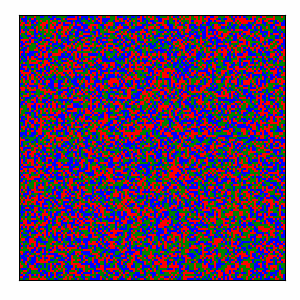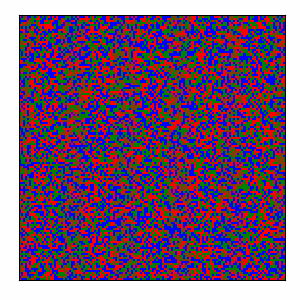Research
Cooperation, Statistical Physics and the Origin of Life
I am currently working on the origin of life problem seen through the lens of statistical physics. My main focus right now is to try to understand how cooperative behavior can appear from simple replicators in a prebiotic setting, ultimately leading to the emergence of biological complexity as we know it.
To this end, my current framework involves lattice-based simulations where players evolve through repeated encounters modeled using the iterated prisoner’s dilemma (PD). The PD has been used extensively to study a wide array of situations where competition arises – from microbiological interactions to human behavior – and is a useful tool to analyze complex replicator dynamics that can arise in an evolutionary setting.
I also believe, in the spirit of many papers that were published on the subject in recent years, that both statistical physics and information theory have a lot to say about the origin of life problem. What actually brought me to the specific problem of understanding how life on Earth came to be is my fascination for those so-called major evolutionary transitions.
Now if the physical medium changes so much between the different states of matter (or, as a physicist would say, phases) then this begs the question: what would be the common denominator between them? I’m convinced that both statistical physics and information theory can give us some answers.


Self-Organized Criticality
I have also worked extensively on Per Bak’s famous theory of self-organized critical systems. While many of the initial claims of the theory have proven very difficult to demonstrate beyond any doubt – which might have been a result of the perhaps overly optimistic claims made by its author several years ago – the analytical framework suggested by Bak can still shed light on several of the natural phenoma that fall under the modern umbrella of “complexity science”. Let’s admit it: that the tendency of a system to be attracted to its critical states be nature’s response to an excess energy flux is a dangerously seducing idea.
Network Theory, Complex Systems and so on
My research interests also go way beyond the origin of life problem, cooperation and SOC phenomena. I have been fascinated by Barabasi’s network theory for quite some time, and more generally by a lot of systems that people study in the so-called “complex systems science”. While the latter has been subject to several criticisms over the years, sometimes rightly so, I am fairly confident that several of the most daunting scientific problems which will be solved in the coming years will require in one way or another input from those analytical frameworks. The 2021 Nobel in physics being awarded for a “major contribution in our understanding of complex systems” is probably a tell-tale sign of the ever-increasing importance of those classes of models in our understanding of nature.